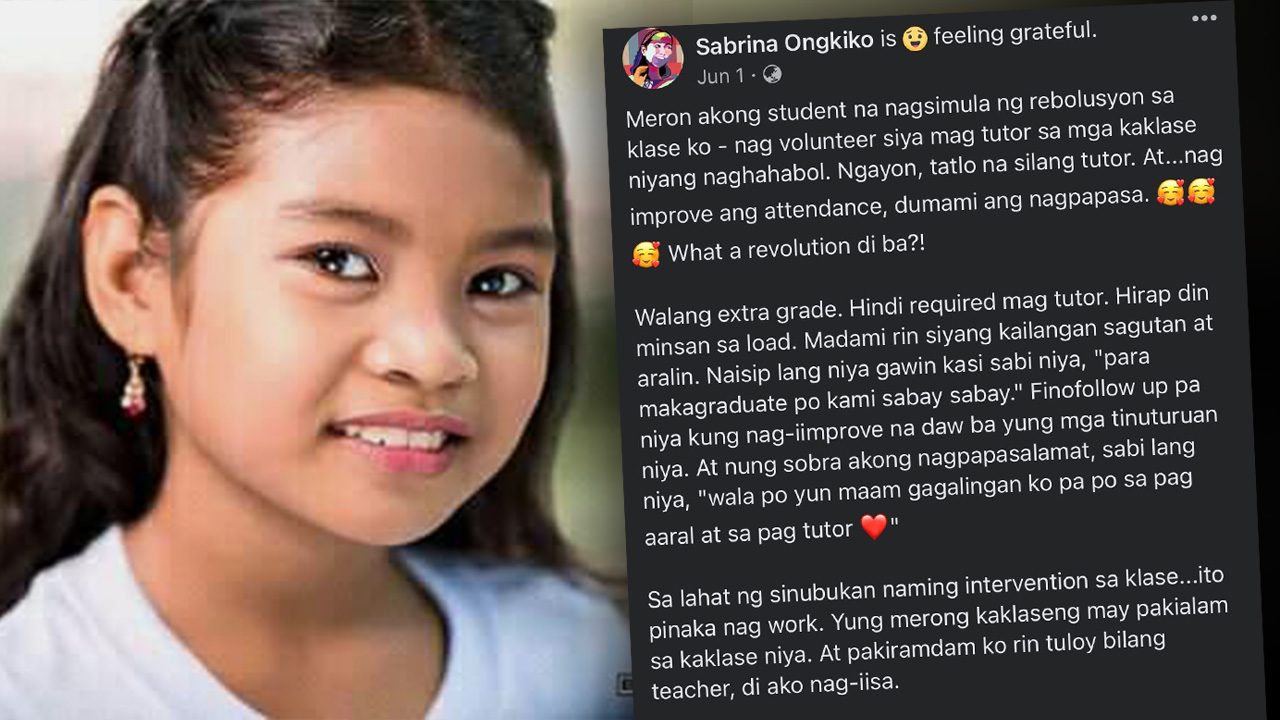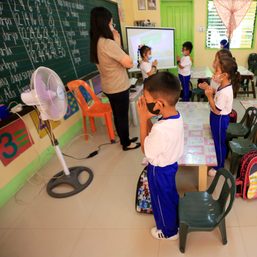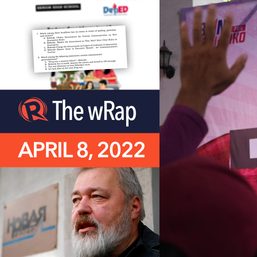SUMMARY
This is AI generated summarization, which may have errors. For context, always refer to the full article.

The new normal in education left students and teachers fending for themselves in a time of uncertainty.
This captures the story of Grade 6 student Ella Jane Perol and her classmates. Bothered by her section’s incomplete attendance in class, she volunteered to teach her peers who are trying to cope with school requirements.
Why did she go the extra mile of helping her classmates? She simply hopes none of her classmates would get left behind.
In December 2020, the Teachers’ Dignity Coalition reported that their group found a decrease in students attending online classes and submitting their completed learning modules. Despite the numbers, Education Undersecretary Diosdado San Antonio said that the drop in online learning use “should not alarm all of us,” citing other digital learning modes that don’t require internet access.
During school days, Perol would patiently wait for her friends to go online so she could help them cope with the seemingly endless pile of schoolwork. She would send them photos of her work and then carefully explain how she came up with the answers.
Inspired by Ella’s initiative, students Julia Lauron and Jasmin Ortiz also lent their helping hands to their classmates in need.
With the help of the three tutors, teacher Sabrina Ongkiko noticed that more students started attending classes and submitting schoolwork.
“Sa lahat ng sinubukan naming intervention sa klase, ito [ang] pinaka nag work – ’yung merong kaklaseng may pakialam sa kaklase niya. Pakiramdam ko rin tuloy bilang teacher, ‘di ako nag-iisa,” Ongkiko said in a Facebook post.
(Out of all interventions we’ve tried in class, this was the most effective – that there’s a student who cares for her classmates. I felt that as a teacher, I am not alone.)
Although other learning platforms are available, students still need internet access so they can send questions and updates to their classmates and teachers. But even with online communication platforms, some of Ella’s classmates remained unresponsive.
“Naramdaman ko po ‘yung hirap at sakripisyo ni Ma’am Sabrina, bigla ko pong naisip na…turuan ‘yung mga kaklase ko,” she said. (I felt the difficulties and sacrifices of Ma’am Sabrina, so I came up with the idea to teach my classmates.)
The cost of learning amid COVID-19
Ella is just one of many learners who don’t have access to gadgets needed for online classes. At home, they only have one working cellphone and a tablet provided by her school, which she shared with her older sister.
“Sabi nga niya (Ella), ‘Sana ‘wag bawiin ang tablet, promise talaga mas galingan ko talaga,’” her mother said. (Ella told me ‘I hope they don’t take away the tablet, I promise I’ll do better.’)
In the Philippines, distance learning is a luxury that only the privileged can afford.
A brand new desktop computer that meets DepEd’s minimum requirements costs around P18,000, while basic tablets and smartphones are cheaper options that sell for around P2,000 to P3,000. (READ: How much would online distance learning devices cost?)
In 2020, some students tried to raise funds online so they could buy the necessary equipment for distance learning. Through online campaign #PisoParaSaLaptop, students took their calls for donations on social media, hoping to collect enough money to buy gadgets.
However, these devices are nothing without a stable internet connection. Data from the National Telecommunications Commission show that as of December 2019, only 67% of Filipinos have access to the internet.
While Culiat Elementary School grants mobile load to Ella every month, there have been instances when telecommunications providers were unable to send these monthly allocations. During such times, the young girl would use her parents’ phone to see photos that classmates and teachers send her.
Considering her classmates’ situations, Ella urged teachers to give more leeway for students who could not finish their modules due.
Towards a ‘better normal’
While many students think that distance learning is not the best way to be educated, the resumption of face-to-face classes feels like a far-fetched dream due to the COVID-19 threat.
As of June 11, the country recorded over 1.3 million COVID-19 cases, of which 61,345 are active. Only 1% of the Philippine population had been fully vaccinated against the virus. The government hopes to vaccinate around 70 million Filipinos by the end of 2021 to achieve herd immunity.
President Rodrigo Duterte said in June 2020 that there will be no in-person classes until COVID-19 vaccines are made available in the country. The Department of Health added that schools must have health facilities that comply with minimum health standards, should face-to-face classes resume in low-risk areas.
With high hopes that the pandemic would end soon, Ella looked forward to bonding with her classmates and teachers on-campus once again.
“Mas maganda po sana face-to-face kung walang pandemic. Na-cha-challenge po ako sa mga classmates ko na matatalino,” she shared.
(Face-to-face classes are better if there’s no pandemic. I feel challenged by my smart classmates to do better.) – Rappler.com
Patricia Kahanap is a Rappler intern and a third-year journalism student from the University of Santo Tomas. She is also the executive editor of TomasinoWeb.org, their university’s premier digital media organization.
Add a comment
How does this make you feel?


![[Time Trowel] Evolution and the sneakiness of COVID](https://www.rappler.com/tachyon/2024/02/tl-evolution-covid.jpg?resize=257%2C257&crop=455px%2C0px%2C1080px%2C1080px)




![[EDITORIAL] Ano sana ang takeaway ni Sara Duterte sa firesale ng mga laptops?](https://www.rappler.com/tachyon/2023/05/animated-DEPED-laptop-fiasco-carousel.jpg?resize=257%2C257&crop_strategy=attention)


There are no comments yet. Add your comment to start the conversation.